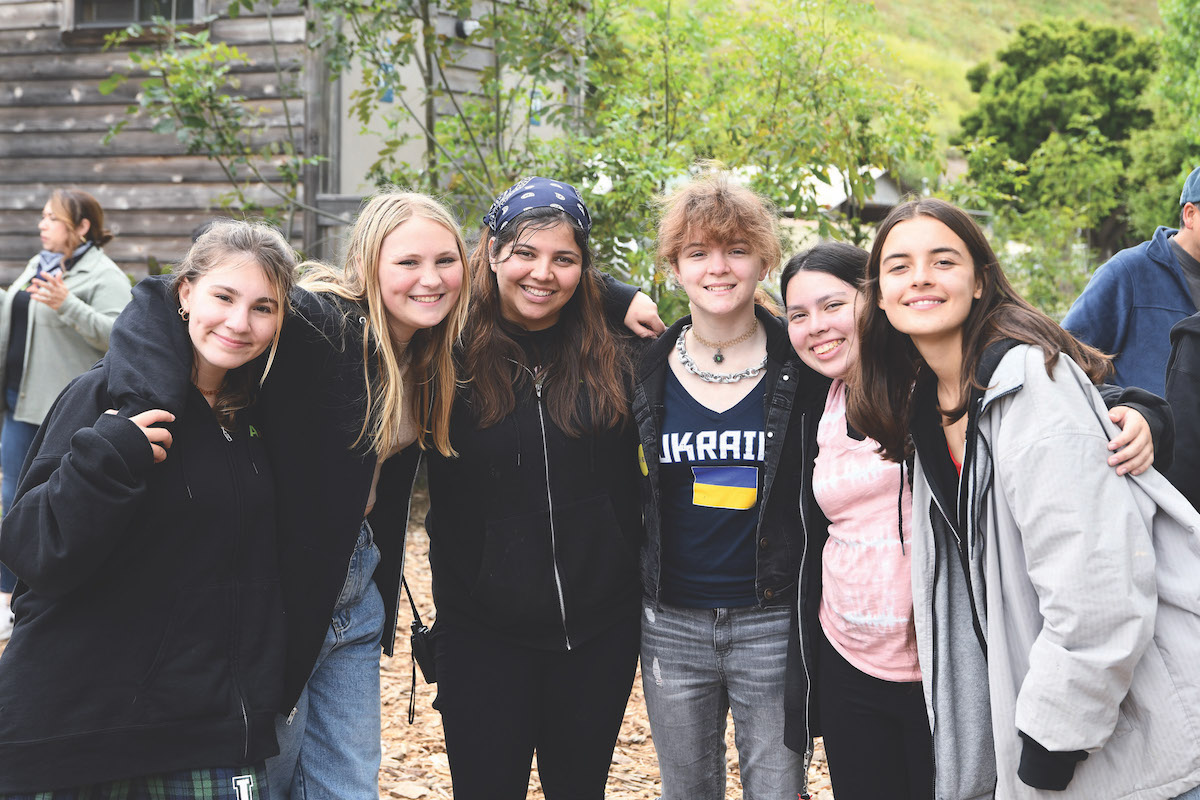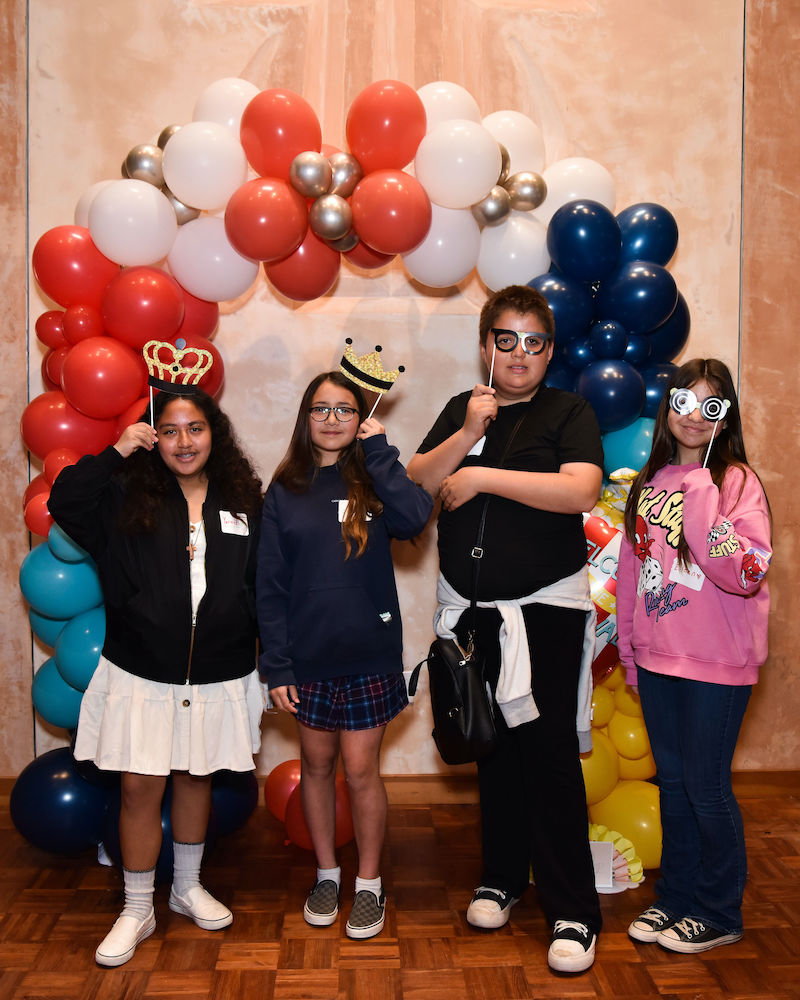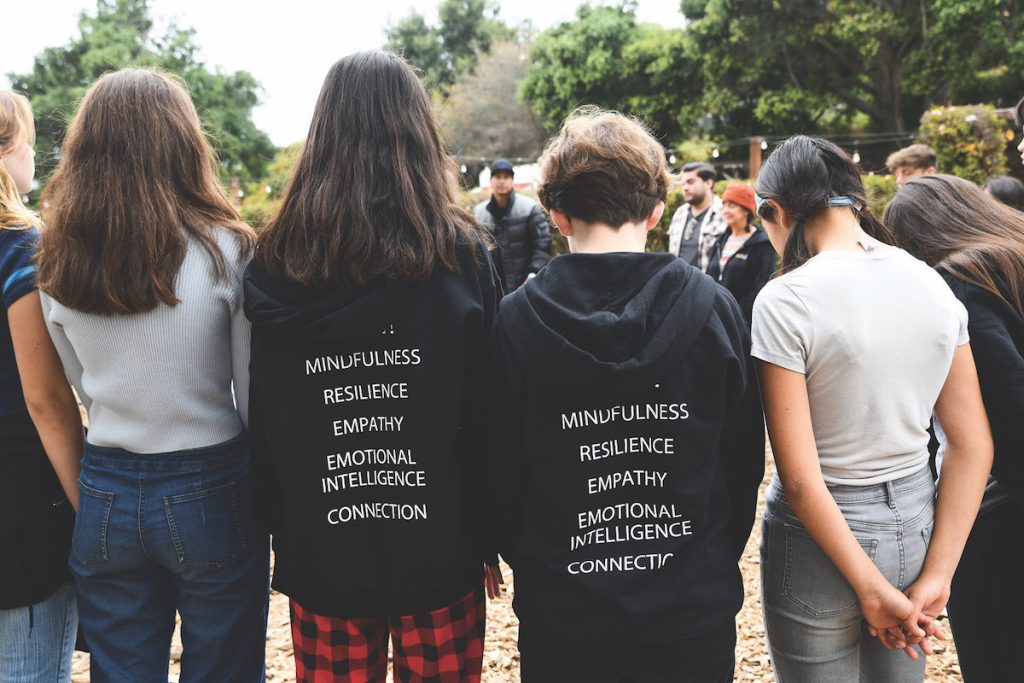AHA!

Roxana Petty is understandably proud that AHA! is celebrating its 25th anniversary in 2024, marking a quarter-century since the nonprofit’s founding as a small summer program just a few months after the infamous Columbine High School massacre. In an effort to reduce the possibility of such a tragedy happening in Santa Barbara, AHA! (which stands for Attitude. Harmony. Achievement.) hosted a small, diverse group of teenagers as an offshoot of its co-founder’s work at Family Therapy Institute. It took seven years for AHA! to become a stand-alone nonprofit, but since then the organization has not only grown exponentially, it has continued to prove its effectiveness as it adapts to the times.
“It’s a huge deal for us how far we’ve come,” said Petty, who has been AHA!’s executive director since 2020, having joined the organization six years earlier. “It was about being able to bring connection to youth to a point where they would not be in a place of despair where they felt like they had to hurt one another. The whole idea was that if you are able to get to know someone, you’re less likely to hurt them. That hasn’t changed.”
Nowadays AHA! is in virtually every middle school, junior high, and high school in town with both in-school and after-school programs, as well as onsite offerings at its downtown location, a summer camp and even multiple programs for educators, parents and community members.

“One of the things that we focus on is finding a way for students who are in different cliques to get along,” said Molly Green, AHA!’s Senior Director of Development. “We focus on finding commonality. No matter how different two people are, there’s always things that you can find in common. And once you discover those connections, it makes it easier to see the other person, their humanity.”
Everything the organization offers is based on five social emotional learning (SEL) competencies, which range from emotion management and self-awareness to social awareness, responsible decision-making and relationship skills, Green said.
“The tools they learn in our programs really help them throughout their life beyond school, in their private relationships and success,” she said. “It’s really a way of life. Once you start to be more aware of your impact and the empathy that starts to be organic within your body, you develop an ability to understand and change how you show up and act, the roles you play with your friends and in your family life and work, and you start to feel empowered in doing the best that you can.”
While AHA!’s core principals haven’t changed, the organization has had to re-dedicate itself as additional challenges arrive, such as the rise of the mobile phone and the extended period of isolation during the Covid pandemic.
“Things changed dramatically in our society when the iPhone came out, which has definitely impacted our youth and our parents and educators,” Petty said. “(Rather than physical violence), teens are using digital platforms to hurt each other and to bully each other. So it’s become a big part of our curriculum to talk about digital responsibility and citizenship.”
AHA! has even developed a summer Digital Cleanse Camp for teens in Grades 8-12, who gather at El Capitan Canyon for five days and four nights of unplugged connection, including art projects, theater improv, dance, Council conversations, hikes, pool and beach time, field trips, cookouts and stargazing among other electronics-free activities. The camp has proved very popular.
Similarly, the Covid closures cause a lot of ill effects from isolation that are still lingering. One of the ways that AHA! responded was to open its clinical site to give teens more personalized, one-on-one support. Anyone who is partaking of the organization’s programs can qualify for six free sessions – a model initially supported by a grant from Cottage Hospital, but which has continued operating even after those funds ran out.
“It’s something we feel very strongly about and have been working hard to maintain,” Petty said. “Hopefully other people see the importance in what we’re doing.”
The program was launched to serve teens, but evolving to include teachers and parents was a seismic shift for the nonprofit, she said.
“We can work with teens, and we can guide them and watch them blossom and grow, but if you don’t have the adults in their lives on board speaking the same language, the progress is stunted,” she said. “The more that we can give these tools to parents and to educators, we begin to see ways in which they can really support one another, and their relationships deepen.”

One of the ways teens and adults come together is through AHA!’s innovative musical program called Sing It Out, which is about much more than the music. While it culminates with each member of the program belting out a solo cover song in a performance backed by a live rock band on the Lobero Theatre stage, the 12-week program is much more about the journey of self-actualization, resiliency and relationship building, as well as artistic expression. Teens are joined by two adult staff participants on the same path of vulnerability and growth guided by AHA! facilitators and music mentors. Members of the performance group support each other in navigating their voices and identities in order to feel confident in the concert, which this year takes place in late April.
While it’s hard to quantitatively assess the effectiveness of its programs, anecdotal and other evidence is clear. Teachers who join their classes in an AHA!-led council circle invariably notate a sea of change in the way the teens process their feelings – and in their ability to engage with each other.
“After five weeks, we are able to successfully leave the classrooms in a place where the students feel a lot more comfortable,” Petty said. “There’s a lot of magic that happens and the feedback from the teachers is that when we leave, the classroom is a lot more engaged, and they drop really fast into an opportunity of being open to learning once that connection has been established.”
Perhaps the best measure of AHA!’s success is the sheer number of program alumni who have reported on their achievements as adults, including more than a dozen who have returned to work as staffers at the organization.
“There are so many youth who have gone through our program, become adults and returned saying how AHA! changed their lives and in some cases even saved their lives,” said Petty, whose own children participated in the organization’s programs.
While some 75,000 youth and community members have been touched by AHA! since its founding in 1999, the need is still growing.
“Investing in our youth and our children is the best thing that we can do for our future. There’s so much out there that is working against them that there needs to be more awareness of all the things that we can do as a community and as a society to help support them. What’s more important than helping youth to become good hearted, kind, emotionally available people?”
AHA!
https://ahasb.org
(805) 770-7200
1209 De La Vina, Suite A
Santa Barbara, CA, 93101







